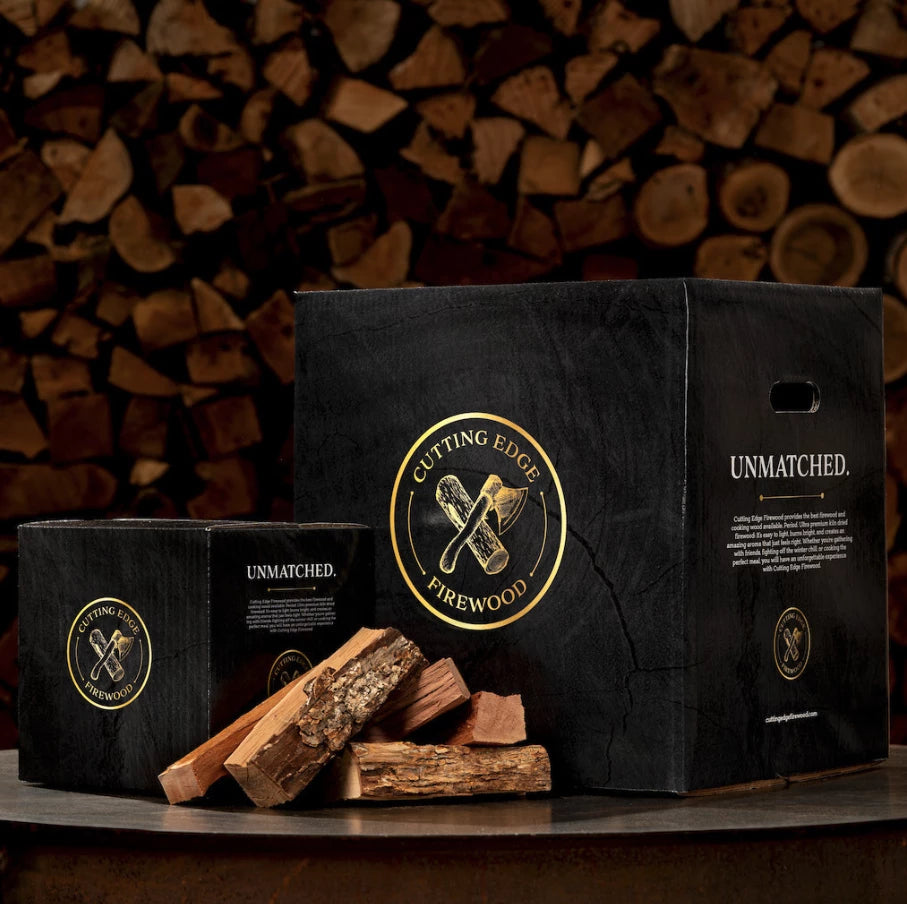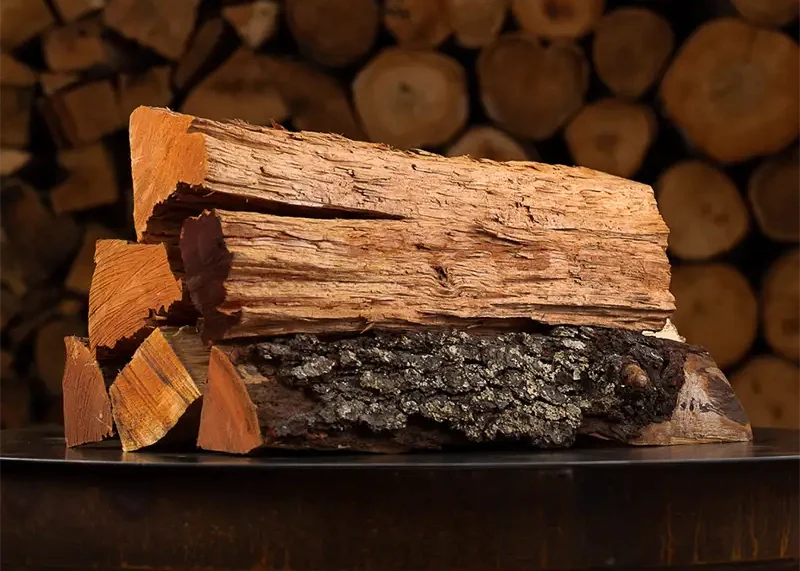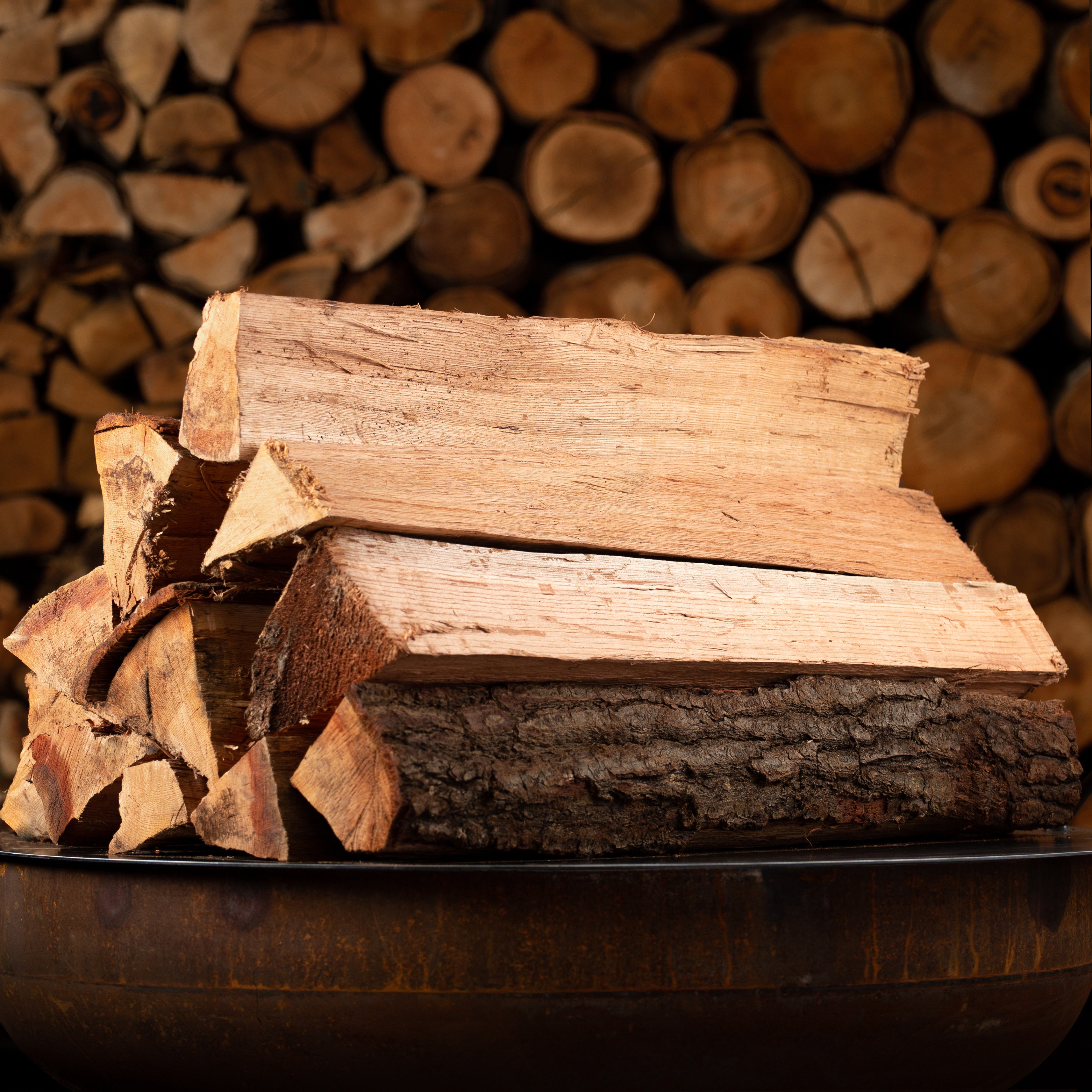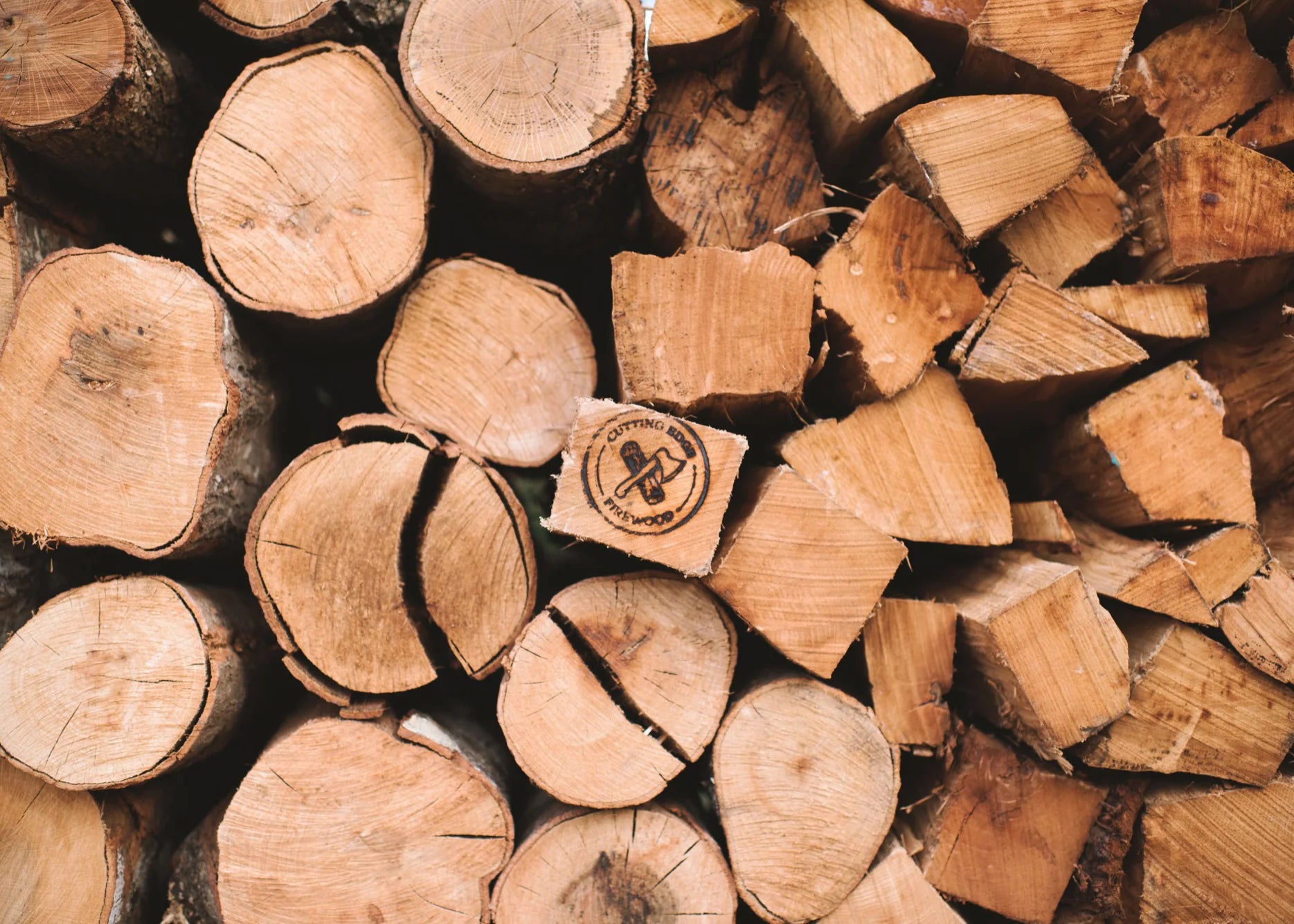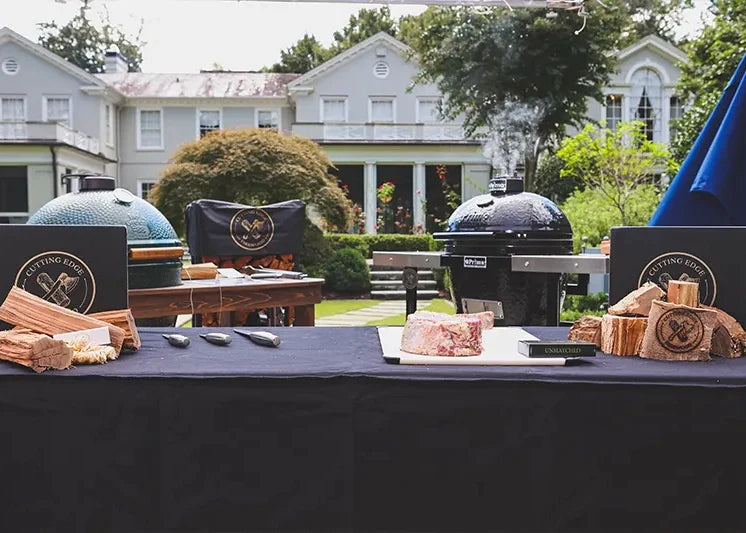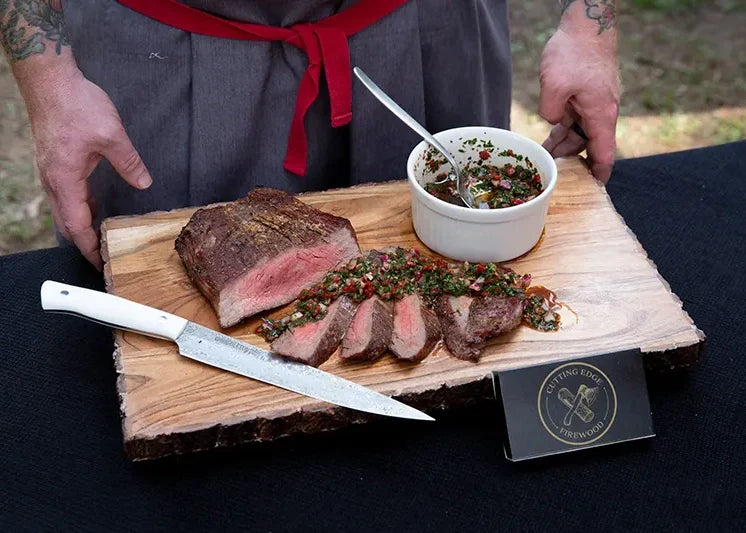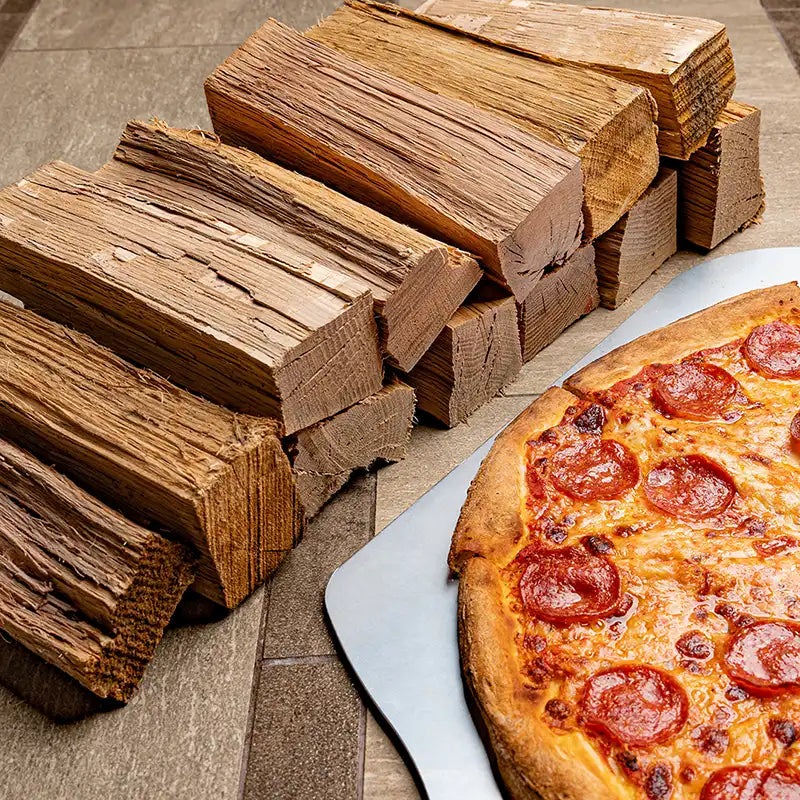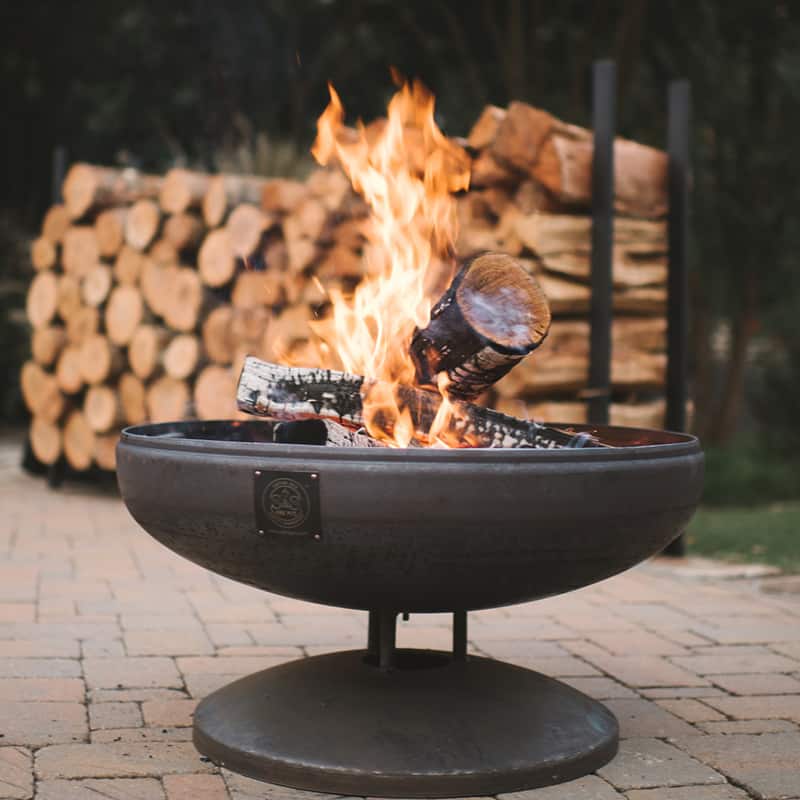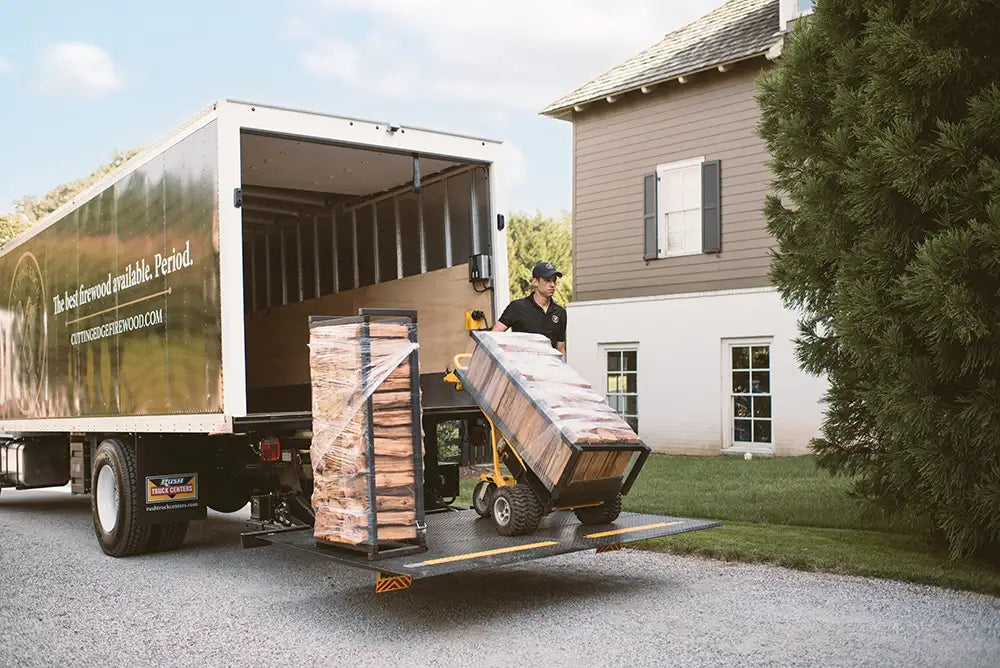According to a recent survey, pizza is America’s favorite food. Consisting of round baked dough topped with sauce, cheese, meat and veggies, it’s an incredibly versatile dish that can be prepared in countless ways.
One of the most delicious ways to make pizza like a pro is using a wood fire pizza oven.
However, you’ll need two things to cook delicious pizza like the pros: a wood fired pizza oven and the right pizza wood. Once you’ve mastered the art of using a pizza wood stove, you’ll be able to make professional-quality pizza from the comfort of your home.
This article will discuss how to use a wood burning pizza oven, choosing the right wood for your oven, dough preparation, and cooking the pizza.
What is a Pizza Oven?
Before we explain how to use a wood fire pizza oven, let’s first take a closer look at what it is. Also known as a masonry or stone oven, a pizza oven is a special type of baking chamber that’s designed to cook large foods, including pizza, at high temperatures. Although they are designed in different ways, most feature a brick or clay construction with a half-dome baking chamber. You simply slide your pizza into the oven, at which point it will cook from the heat produced by the burning wood.
How Does a Pizza Oven Compare to a Convention Kitchen Oven?
A pizza oven isn’t the same as a conventional kitchen oven. For starters, pizza ovens are typically heated using wood, whereas kitchen ovens are heated using electricity or gas. This alone can have a significant impact on the flavor and overall quality of your pizza. Since they use gas or electricity, kitchen ovens don’t offer the same flavor as their wood-fired counterparts. You can still cook pizza in a kitchen oven, but you shouldn’t set your expectations too high.
Kitchen ovens aren’t able to produce as much heat as a pizza oven, either. A typical kitchen oven has a maximum temperature of about 500 to 600 degrees Fahrenheit. While this is more than enough heat to bake chicken, pork chops, casseroles and other dishes, it’s not enough to get that authentic Neapolitan style pizza flavor (which cooks at 900 degrees).
When cooked in a kitchen oven, pizza dough will remain relatively soft. By cooking pizza in a home pizza oven, on the other hand, the dough will turn to a golden brown color with a crispy texture. This is because pizza ovens can reach temperatures of 1,000 degrees Fahrenheit or more.
In recent years, there is also a fun and growing collection of stainless steel pizza ovens that are smaller, more portable, and have a lower cost. Despite being smaller, they can still reach incredibly hot temperatures and make for some incredible pizza making. Examples of this kind of pizza oven include the Ooni Pro, Ooni Karu, Gozney Dome and Bertollo Wood Fired Oven.
How Does a Wood Fired Pizza Oven Work?
A wood-fired pizza oven is a culinary marvel that relies on the timeless principles of radiant heat and convection. It starts with a wood fire, which rapidly generates intense temperatures, often exceeding 700°F (370°C).
The oven's dome and floor absorb this heat, creating a scorching cooking surface. As the wood burns down to embers, the oven retains the stored heat, ensuring consistent and even cooking.
The pizza, placed directly on the oven floor or on a stone, is subjected to this heat, quickly crisping the crust while the convection currents circulate around, perfectly cooking the toppings. The result is a wood-fired pizza with a charred, smoky flavor and a delightful balance of textures.
To understand how a wood fired pizza oven works, you must first know that there are two types: tiled pizza ovens and brick pizza ovens. The tiled type is probably what you see most often in pizzerias and restaurants, while the brick ones are mostly found on terraces or private homes. This does not mean that one is better than the other, as both are equally good for baking pizzas. The tiled ones are easier to clean and can be made in any size, with no technical difficulties involved.
The operation of any wood-burning oven depends on several factors, such as: the thickness of the oven walls; their material and quality; and the method used to control airflow and temperature.
Why Are Wood Fired Pizza Ovens Better Than Gas Fired?
Wood fired pizza ovens stand tall as the epitome of perfection for pizza connoisseurs worldwide. They work under high heat, reaching the desired temperature swiftly and ensuring your pizza cooks to a golden crispiness that's hard to achieve in conventional ovens. The charm of using wood transcends the boundaries of taste, infusing your pizza with a distinct smoky flavor that's impossible to mimic with gas-fired ovens.
The outdoor oven experience is not just about the product, but also the process. Lighting the wood, managing the flames, and feeling the emanated warmth; these moments craft an authentic and engaging cooking adventure, turning every meal into a celebration.
Not to mention, wood is a renewable resource, unlike gas ovens which produce a hefty carbon footprint. The commitment to environmental sustainability alongside impeccable taste makes wood-fired ovens a clear choice for every pizza enthusiast.
What’s the Best Wood To Use for Pizza?
Begin your culinary journey where wood is more than mere fuel; it's an essential ingredient, imparting a unique flavor and aroma onto your pizza as it cooks. And as with any ingredient: quality matters. Softwoods won't provide the same heat or burn intensity as hardwoods, resulting in a less than optimal pizza.
At Cutting Edge Firewood, all of our hardwoods are hand-selected and put through a rigorous kiln drying process to staunchly repel pests, rot, and mold, guaranteeing your pizza wood imparts only pure, woody flavor and a pleasant aroma.
While numerous hardwoods, like hickory and cherry, are suitable for cooking, we champion oak as our preferred choice for pizza oven wood. Oak ensures a hot, consistent burn, gracefully elevating the taste of your pizza with a mild smoky flavor that complements rather than overwhelms your toppings.
With oak's dependable and sustained heat, there’s no need for constant refueling. Your outdoor pizza oven operates at peak performance, delivering perfectly cooked, exquisite pizzas every time. Oak is also a particularly forgiving wood, perfect for first time pizza-making connoisseurs.
What Size Wood Do You Need?
Embarking on the journey of wood-fired pizza cooking necessitates a close consideration of wood size. The ideal size should be convenient to handle, fit comfortably on the floor of the oven, and burn efficiently to reach and maintain the high heat required for cooking the perfect pizza.
For many home pizza ovens, small pieces of wood are preferable as they catch fire easily, helping to increase the oven temperature rapidly, and their consistent burning ensures the heat is evenly distributed throughout the cooking process.
Here, size does matter. Choose the wood that will fit best in your pizza oven. For larger ovens, our 16 inch pizza wood is ideal, providing enough heat to warm the entirety of the oven for crisp, even cooking.
Our mid-sized wood is the perfect size for ovens with an internal diameter of 18 inches to 26 inches, while our 6” miniature pizza wood is cut specifically for your portable pizza oven, allowing you to make your own pizza wherever inspiration hits — from the campsite to your backyard.
No matter which size fits your cooking setup best, all of our pizza wood is sustainably sourced, expertly cut, and desirably dense, creating a longer and hotter burn to craft that perfect crispy crust every time.
How to Use a Wood Fired Pizza Oven: A Step-by-Step Guide
A wood fired oven is a great alternative to more traditional methods of cooking, as there are no harmful fumes or gasses such as those emitted by charcoal or propane. If you’re ready to fire up your pizza oven, then follow along as we share how to cook in a pizza oven.
Choosing the Right Wood
Unless you’re experienced with pizza ovens, you may assume that all wood is equal. After all, how much of a difference can wood really make when cooking pizza? Well, using the right wood matters for several reasons.
Let’s start by hearing from Richard Blais, winner of Bravo’s Top Chef All-Stars, when he explained the importance of quality cooking wood by saying, “Firewood is an ingredient. Once you wrap your head around that, and understand that great cooking uses great ingredients, you’ll want to use Cutting Edge Firewood every time.”
The quality of wood affects several important factors:
- The Flavor – if you cook with wood that is musty, then your pizza will taste musty. If you cook with wood that has mold or fungus, then you will cook off mold and fungus into your pizza. If, however, you use wood that is clean and dry, you will get nothing but the amazing wood fired taste people love in good pizzas.
- The Experience – have you ever had to work really hard to get wood to light? It’s frustrating and time consuming! It’s so much better when you can light a single match and then ignite a beautiful fire quickly.
- The Heat – Wood fired pizza ovens are meant to cook the pizza at extremely high temperatures, but low quality wood will never get the fire hot enough. You need dense and dry wood to create the kind of heat required for amazing pizza.
- Consistency – If you add wet wood to a fire, then the temperature of the fire will actually drop. This makes it much harder to maintain consistent temperature when cooking a pizza and can cause major headaches when trying to cook. You wouldn’t toss a cup of water into your oven, so why would you add wet wood?
So here is the moral of the story: If you want to step up your pizza-cooking game, then you need to recognize that firewood is a key ingredient, and the best ingredients make the best pizzas.
Pro Tip: Choose Ultra Kiln Dried Cooking Wood
Always use dry pizza wood in your pizza oven. Burning wet or damp wood will result in a less-efficient combustion process. Once you light it– if you’re even able to light it — it will convert less organic wood matter into heat. Unfortunately, this means the temperature of your pizza oven will be too low to create a crispy crust. At the same time, the wet or damp wood will release high concentrations of particulate matter into the air, some of which will land on your pizza.
Don’t assume that a piece of wood is dry just because it doesn’t feel wet or damp – there can be plenty of moisture on the inside.
Prepare your dough
If you are brand new, we recommend using store bought, pre rolled dough. Learning to make the dough and learning to make pizza can be overwhelming. You don’t have to do it all at the same time. Learn cooking the pizza’s with this dough and when you feel confident, move on to the challenge of making your own dough. You can make good pizza with store bought dough, but when you are ready for greatness, move onto making your own dough at home.
If you are cooking pizza in a wood fired pizza oven, you will need to prepare the dough. This is an easy task and it’s well worth the effort as this will give your pizza a different flavor.
For a truly exceptional wood-fired pizza experience, start with a dough that has been given the time it deserves. This recipe incorporates a long fermentation period to develop complex flavors and create a crust that is crispy on the outside and chewy on the inside. Here's how to make wood-fired pizza dough:
Ingredients
- 20 ounces (about 4 cups) bread flour, preferably Italian-style "OO"
- 0.4 ounces kosher salt (about 4 teaspoons)
- 0.3 ounces (about 2 teaspoons) instant yeast, such as SAF Instant Yeast
- 13 ounces water
Instructions
- Mix the Dough
In a large bowl, combine the bread flour, kosher salt, and instant yeast. Whisk the dry ingredients until they are thoroughly mixed.
Gradually add the water to the dry ingredients. Use your hands to incorporate the water into the flour mixture until no dry flour remains on the bottom of the bowl.
- Allow for a Long Fermentation
Cover the bowl tightly with plastic wrap and let the dough rise at room temperature for eight to 12 hours. This extended fermentation period will develop the dough's flavor and texture.
- Divide and Refrigerate
After the initial fermentation, turn the dough out onto a lightly floured surface and divide it into four equal portions.
Place each dough ball in a covered quart-sized deli container or a zipper-lock freezer bag. Seal the containers or bags and refrigerate the dough. Allow it to continue to rise for at least two more days, and up to 4 days. The longer the fermentation, the better the flavor and texture.
- Prepare for Baking
When you're ready to make your wood-fired pizza, remove the dough from the refrigerator and let it rest at room temperature for at least 2 hours before baking. This allows the dough to relax and become more pliable.
- Preheat Your Wood-Fired Oven
Before shaping your pizza, ensure that your wood-fired pizza oven is properly preheated. The oven should reach a high temperature, typically between 700°F to 900°F (370°C to 480°C). Ensure that the firewood has been reduced to glowing embers for an even cooking environment.
- Shape Your Dough
On a floured surface, stretch and shape each dough ball into a thin, even pizza crust, working from the center outward. The thinner the crust, the crispier it will become in the wood-fired oven.
Cooking the pizza
Once you have your dough ready, add your desired toppings. Then, it’s time to start cooking the pizza!
Remember that you’ll need a pizza oven with a high temperature in order to cook your pizzas in extreme conditions. This can be different depending on the type of pizza that you are making. For example, if you’re making a thin-crust pizza on a stone, this is usually in the range of 800-900°F (426 – 431°C). If you’re baking a large pizza with toppings, this is usually in the range of 500-800°F (538 – 546°C). In order to be safe and reduce your risk of burning your pizzas, make sure that your oven has a thermostat. Also, make sure that it can reach this temperature easily. You can test this by putting in your thermometer and see if the oven reaches the right temperature.
Tips for Cooking a Wood Fire Pizza
Here are some crucial steps in the pizza-cooking process, ensuring that every pizza you craft is a masterpiece in its own right.
Preheat Your Pizza Stone
Allow the pizza stone to heat for at least half an hour. A thoroughly heated stone ensures a perfectly crispy crust from the moment the dough touches its surface, mirroring the conditions of a traditional wood-fired oven.
Flour Your Hands
Dust your hands with flour to prevent the dough from sticking as you shape it. This ensures a smooth, unbroken crust ready for toppings.
Use a Lightly Floured Peel
Employ a lightly floured wooden or metal peel to safely place and rotate your pizza in the hot oven. Rotate it 180 degrees after about 40 seconds to guarantee even cooking, ensuring every bite is as good as the last.
Be Consistent With Oven Placement
Avoid shifting the pizza to another part of the oven during rotation to prevent uneven cooking or burning. Consistency is key for achieving that golden, evenly cooked crust.
Monitor the Cooking Process
Because of how hot pizza ovens can get, the cooking time for your wood-fired pizza will be much quicker than when baked in a conventional oven. Keep a vigilant eye — you’ll know it's ready when your pizza achieves a beautifully golden-browned crust.
Backyard Pizza Chef Testimonial
It’s easy for us to talk about the importance of good cooking wood, but will you actually notice the difference when cooking a pizza in your backyard?
Here is what one of our customers, Greg A in Maryland, had to say:
“I wanted to take a moment to thank you for sending a welcome card as a first time customer. I appreciated it greatly and showed my son who was also quite impressed. But I have to say what really prompted this email was the results I got from your wood product.
I have had a wood fired pizza oven for a good six years or so as you can see in the pics attached. I made it through all the bad pizza lessons you could imagine working the dough and other ingredients to craft the perfect method for Neapolitan pizza. I was frustrated over the years finding consistent, dry, clean wood. Here in Maryland what was considered kiln dried was first stored outside and aged, then finally at some point sent to a kiln for a few hours at best.
I believe I have now found the perfect wood at Cutting Edge. Everything is in balance, temperature, flavor, and time. The close up picture with the pizza and a piece of wood burning behind it tells the story. It burns across the whole stick, evenly lit, hot bright flame. Lights quick and easy. It took half the time to bring the oven up to temp, and half the wood. In fact I could control the temperature so easily with this wood because it was an immediate contributor of heat rather than taking heat to smolder and dry out before truly burning. The pizza tasted clean and crisp like it should. By far the best wood for any oven – I am so pleased I have found the right source!
Thank you again. It's important for you to know that the effort you and your whole team puts into your product certainly shows and is greatly appreciated!
Best regards,
Greg Allgair”
Tips for Using a Pizza Oven
Along with using the right cooking wood, follow these tips on how to use a wood fired pizza oven.
- Aim for an internal temperature of 500 to 900 degrees Fahrenheit in your pizza oven depending on the style of pizza you are cooking. You can raise the temperature of your pizza oven by adding more cooking wood.
- Build a fire in the center of your pizza oven, and when you’re ready to add the pizza, use a metal scraper to move the coals to the back of the oven. Some small ovens have a dedicated place for the pizza wood.
- Clean any remaining wood or ash out of your pizza oven after each use.
- Avoid using dough with a high sugar content. Sugar-based dough is fine when cooking pizza is a conventional kitchen oven. When used in a wood-fired pizza oven, though, it causes the crust to cook unevenly.
- Don’t leave your pizza sitting in the oven for too long. Assuming your pizza oven has reached a temperature of 500 to 800 degrees Fahrenheit, it should only take one to two minutes to fully cook a pizza. Allowing it to cook for longer than two minutes may result in the crust or toppings burning.
- Use caution when adding and removing your pizza to protect against burns.
- Remember, while it’s called a “pizza oven,” you can cook other types of foods in it, some of which include potatoes, bread, fish, hamburgers, steaks and more.
- To make sure your pizza doesn’t burn, cook it along the shortest side of the oven.
- You can also help your pizza to cook evenly by closing the oven door.
- Place the pizza immediately on a peel after it is cooked so that it stays hot and crispy.
Don’t limit your pizza-cooking activities to a conventional kitchen oven. Using a pizza oven with the right wood will help you create better-tasting pizza that simply can’t be achieved with a kitchen oven. And once you get the hang of it, you can use it to cook other foods.
Try the Best Pizza Cooking Wood Available
Want to make wood-cooked pizza in your backyard that gives your friends and family a true taste of Italy? Then make sure you use Cutting Edge Firewood’s premium pizza wood.
In the words of Ali Haider Ali, Italian pizza chef, “Cutting Edge Firewood Pizza Wood was a huge part of my success.” If Haider Ali uses our ultra kiln dried pizza wood to cook his world-famous pizzas, then imagine how this high-quality wood can elevate your own backyard cooking experience.
Discover the difference our miniature cut or standard cut pizza oven wood makes. Try it today!
Sources:
According to a recent poll, pizza is officially America’s favorite food | AJC

